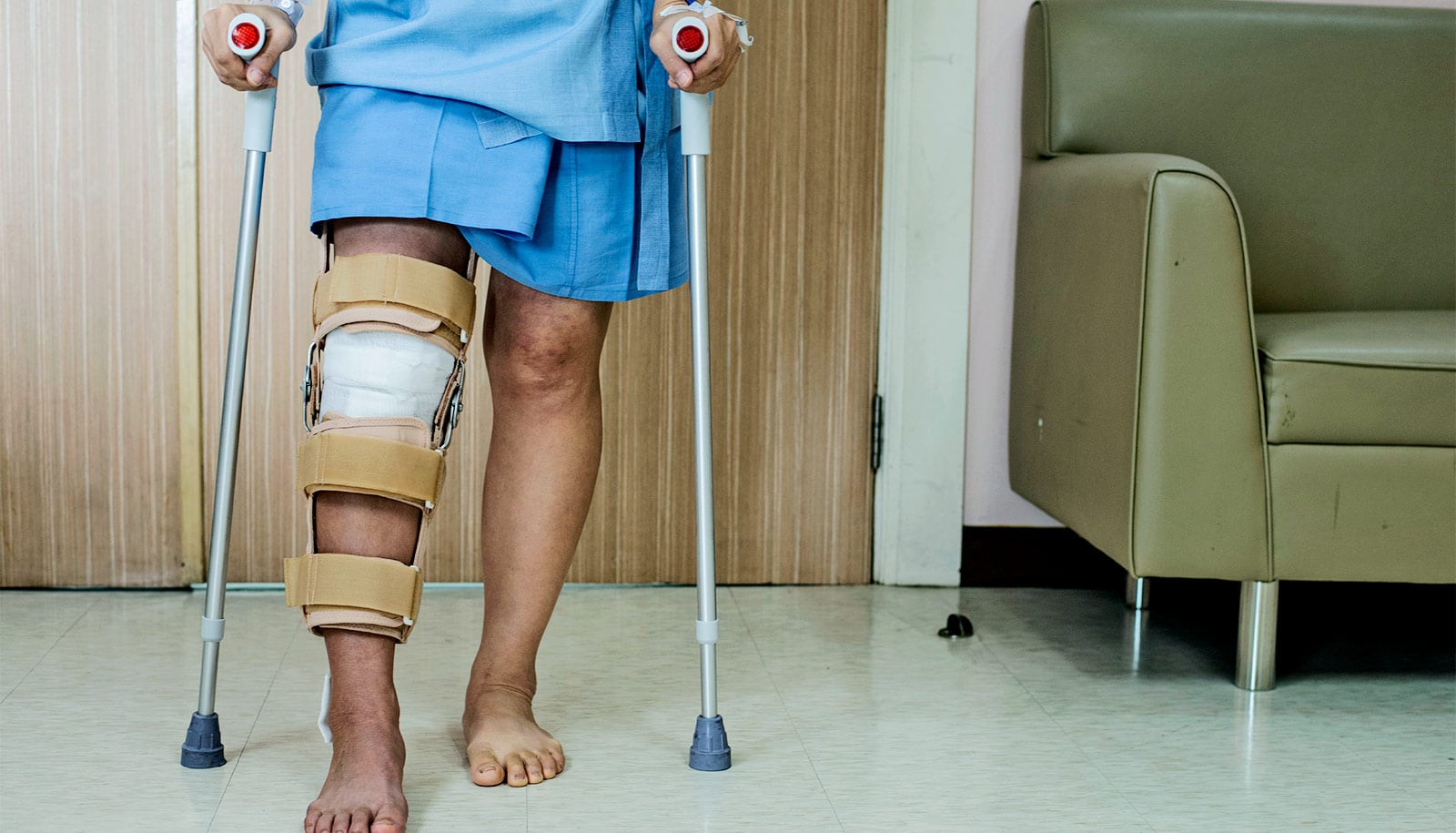The prevalence of patients who face early knee osteoarthritis symptoms after anterior cruciate ligament reconstruction is staggering—but not much is being done to address it, according to new research.
The study, published by the Journal of Athletic Training, shows these symptoms persist throughout the first year following surgery and need to be addressed with early intervention.
“We’re trying to change the narrative,” says study author Matthew Harkey, assistant professor in the kinesiology department at Michigan State University.
“We see fairly young, active individuals experiencing extensive symptoms, but these symptoms are not interpreted by clinicians as something that may be related to osteoarthritis. Ignoring these symptoms might be setting them up to experience long term decline and function.”
ACL reconstruction is an arthroscopic surgical procedure that replaces torn anterior cruciate ligament in the knee with a graft.
According to the National Institutes of Health, approximately 400,000 procedures are completed each year in the United States. A 2017 study showed that approximately 14 million individuals in the United States alone suffer from symptomatic early knee osteoarthritis (OA).
For the new study, the researchers examined a data set of 82 individuals who underwent ACL reconstruction, each of whom completed a survey regarding their knee pain and symptoms following surgery. The results showed nearly one in four participants reported persistent early arthritis symptoms from 6 to 12 months after knee surgery.
Harkey will present similar research at the Osteoarthritis Research Society International Conference. This time, he used data from 3,200 individuals from the New Zealand ACL Registry and found that close to one in three had early knee OA symptoms up to 24 months after ACL reconstruction.
Not addressing these symptoms in a timely manner places patients at risk for long-term structural decline, Harkey says. Although the study doesn’t show that patients experiencing symptoms will develop early OA, it heightens athletic trainers’ awareness of the possibility of symptoms, which could be addressed with intervention.
“It’s a bit complex—we can’t outright say arthritis is developing, but there’s a large group of patients whose symptoms linger long after surgery,” Harkey points out. “Often, clinicians assume that these post-operative symptoms will naturally improve as patients reengage with their usual activities. However, what we’re seeing suggests these symptoms persist and likely require a targeted approach to manage or improve them.”
Intervention could include exercise or physical therapy to help maintain strength and movement, Harkey says. He adds that the health care infrastructure remains a barrier for patients, who often are limited to a low number of physical therapy visits through their health care plans.
Moving forward, Harkey aims to demonstrate how early knee OA after ACL reconstruction may lead to structural joint damage over time.
Source: Marco Schimizzi for Michigan State



